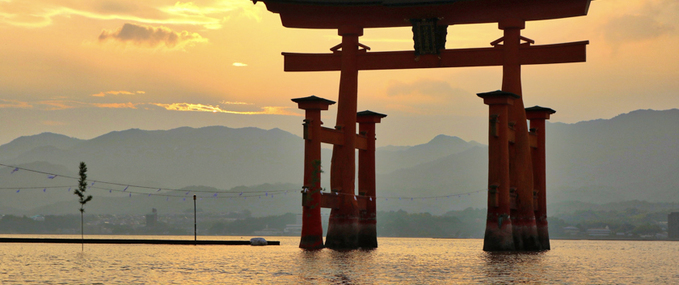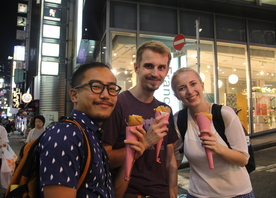Table of contents:
Shinto in Japan
Types of Shinto Shrines
Shinto Shrine Etiquette
Fushimi Inari Shrine
Ise Grand Shrine
Itsukushima Shrine
Toshogu Shrine
Izumo Taisha
Many parts of Japanese culture are unfamiliar to international visitors which is they’re so keen to visitor so many cultural attractions around the country. For those looking to delve into Japan’s spiritual side, visiting temples and shrines are a great way to gain insight into the country’s long-held beliefs. We’ve touched on Buddhist temples like the ones in Kyoto before, so let’s now look at which Shinto shrines you should visit in Japan.
Shinto in Japan
Before visiting shrines in Japan, it’s best to have a basic understanding of what the Shinto religion actually is. Unlike Buddhism, Shinto originated in Japan and is deeply woven into the fabric of Japanese culture and history. The Shinto religion involves the worship of multiple gods or spirits known as kami, who are said to inhabit all things.
Purity is the big focus of Shinto and there are different rituals that involve the cleansing of worshippers. Since Shinto has evolved organically and has no single origin or sacred text, practices vary depending on the kami and the region of Japan in which they take place.
Types of Shinto Shrines
With so much variety in the Shinto religion, it makes sense you’ll find all sorts of different Shinto shrines across the islands of Japan. Perhaps the biggest difference in shrines is the kami to which they are dedicated. Some are shrines to kami that represent war like in the case of Hachiman shrines or rice as represented by Inari shrines.
Sengen shrines, instead, are dedicated to the spirt of Mt Fuji, while there are also ones founded to honour the heads of important Japanese clans. Another difference comes from who builds the shrine, whether it be Imperial shrines created by governments of the past or local shrines built by a local community.
Shinto Shrine Etiquette
As with any religious landmark, there are certain behaviours expected of visitors to show respect to the site. Some etiquette tips for visiting Shinto shrines respectfully include:
- Bowing before passing through the torii gate at the entrance and pass under the gate either side of the centre;
- Outside the shrine you’ll find a basin of water for washing your hands, which is done by filling the ladle and washing each hand, starting with your left hand.
- Some shrines have a bell hanging over a donation box, which you may ring before donating to the shrine.
Fushimi Inari Shrine
Perhaps the most famous Shinto shrine these days thanks to countless photos online, the Fushimi Inari Shrine is one sight not to miss. Located in southern Kyoto, the shrine is famous for its great long arcade of red torii gates that link up buildings in the shrine complex. Believe it or not, there are thousands of the gates here, meaning plenty of photo opportunities for visitors.
As foxes are the symbol of Inari, you’ll see many fox statues among the shrine grounds. Besides being a delight to see with your own eyes, one of the best things about the Fushimi Inari Shrine is that it’s completely free to visit.
Getting There: The easiest way to visit is to first get to Kyoto and then head to the Inari station, easily done on the JR Nara line with the Japan Rail Pass.
Ise Grand Shrine

Among the thousands of Shinto shrines in Japan, one of the most significant is the Ise Grand Shrine in Ise City. The ancient shrine was built to worship the sun goddess Amaterasu and was said to have been built 2000 years ago, although its exact time of founding is unknown. Interestingly, as part of the Shinto approach to life and death, the shrines are torn down and rebuilt every 20 years in a process called Shikinen Sengū. The next rebuilding, the 63rd of its kind, will occur in 2033.
Within the complex there are two main shrines, the Inner Shrine and Outer Shrine, however it is the Inner Shrine that is said to be Japan’s most sacred. Despite their cycle of renovation, the shrines maintain their historic design and are still even built in a manner that requires no nails.
Getting There: The nearest big city to reach Ise from is Nagoya. Travelling with a Japan Rail Pass, you’ll want to take the train to Kameyama and then connect to Iseshi Station.
Itsukushima Shrine
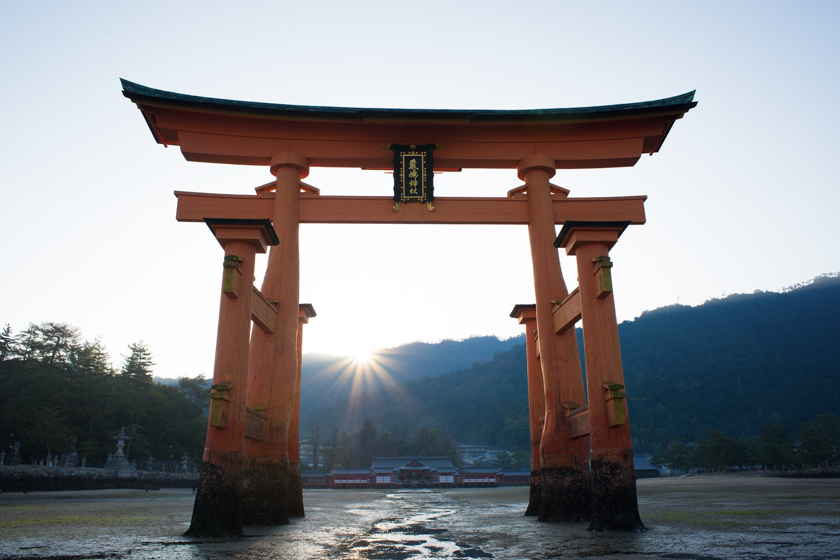
Torii gates are a main feature of many Shinto shrines, but the torii gate at the Itsukushima Shrine is definitely special. That’s because it is the famous floating torii gate, seen in countless photographs. This popular Shinto shrine sits on the island of Miyajima in Hiroshima Bay and has many tourists come through to admire its scenic setting. The gate is currently under renovation and is likely to be covered for much of 2020.
However, there’s more to the Itsukushima Shrine than its famous torii gate. The main buildings of the shrine were also constructed over water, with boardwalks taking you between its prayer hall, main hall and noh theater stage. The combination of its setting and its traditional architecture make this a memorable shrine to visit.
Getting There: To visit, first travel to the city of Hiroshima, from which you can take the ferry across to Miyajima for free, as it’s included in the Japan Rail Pass.
Toshogu Shrine
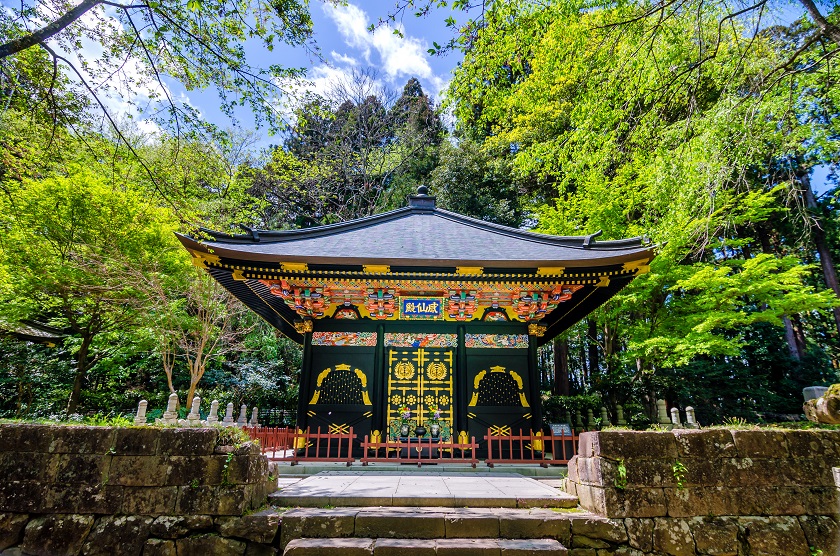
Hidden away in the mountains, the city of Nikko is best known for the raw natural beauty surrounding it. However, it’s also home to the extravagant Toshogu Shrine which is one of its premier attractions. This clan shrine was built to enshrine Tokugawa Ieyasu and features the clan leader’s mausoleum.
While originally humble, his grandson Iemitsu lavishly renovated the mausoleum in the 1600s. Those luxurious touches, like liberal use of gold leaf and ornate wood carvings, make this is one of the most beautiful Shinto shrines found in Japan. It’s worth nothing, that while a Shinto shrine, there are Buddhist elements incorporated as well.
Getting There: You can get to Nikko by taking the train from Tokyo to Utsunomiya, where you can connect to the Nikko line. The entire trip is possible with the Japan Rail Pass.
Izumo Taisha
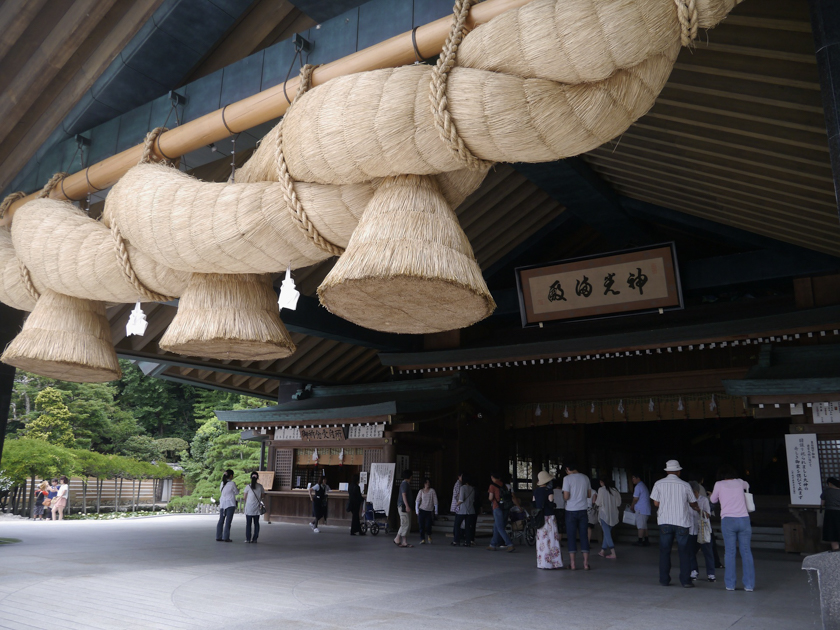
While the other shrines listed here have quite a long history under the belt, none can compete with the Izumo Taisha shrine in the city of Izumo. It’s unknown exactly how old this Shinto shrine is, but it’s considered the oldest in the country. The shrine is dedicated to Okuninushi, a kami of many things including marriage and the creation mythology of Japan’s lands. That importance is reflected in the belief that all the kami to meet here at Izumo Taisha once a year. When visiting the shrine, the most impressive part of the visit is seeing the shrine’s immense main hall that reaches 24 metres in height.
Getting There: While not the easiest to reach with the Japan Rail Pass, you can take a series of trains to get from Hiroshima to Nishi-Izumo Station and then take local transport from there.
